There are different spider species indigenous to Washington of which the most dangerous are the false widow and the brown widow. The northern yellow sac is said to be mildly venomous. The wolf spider is said to thrive in most regions of Washington DC.
| Hobo (Eratigena agrestis) | Common House (Parasteatoda tepidariorum) | Barn Funnel Weaver (Tegenaria domestica) |
| Giant House (Eratigena atrica) | Spiders of the Wolf (Lycosidae) family | — |
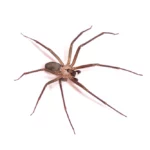 Brown Recluse Spider (Loxosceles reclusa) - The brown recluse spider is a special spider found mostly in the central and southern parts of the U.S. It's part of a small group of spiders in North America known for having strong venom, along with the Chilean recluse and black widow.… Continue Reading >
Brown Recluse Spider (Loxosceles reclusa) - The brown recluse spider is a special spider found mostly in the central and southern parts of the U.S. It's part of a small group of spiders in North America known for having strong venom, along with the Chilean recluse and black widow.… Continue Reading >
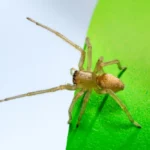 Northern Yellow Sac Spider (Cheiracanthium mildei) - Discover the fascinating world of the northern yellow sac spider, part of the cheiracanthiidae family. With a shared name across its genus, this spider stands out for unique reasons.… Continue Reading >
Northern Yellow Sac Spider (Cheiracanthium mildei) - Discover the fascinating world of the northern yellow sac spider, part of the cheiracanthiidae family. With a shared name across its genus, this spider stands out for unique reasons.… Continue Reading >
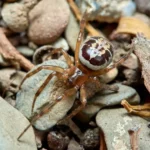 False Widow (Steatoda nobilis) - Ever heard of the False Widow spider? It's a dark-colored spider that looks a lot like the famous black widow spider. But guess what? They're actually pretty shy!… Continue Reading >
False Widow (Steatoda nobilis) - Ever heard of the False Widow spider? It's a dark-colored spider that looks a lot like the famous black widow spider. But guess what? They're actually pretty shy!… Continue Reading >
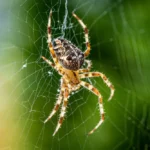 Cross Orb Weaver (Araneus diadematus) - Did you know the Cross Orb Weaver spider comes from Europe and North America? Their legs are super cool because they can spin special round webs.… Continue Reading >
Cross Orb Weaver (Araneus diadematus) - Did you know the Cross Orb Weaver spider comes from Europe and North America? Their legs are super cool because they can spin special round webs.… Continue Reading >
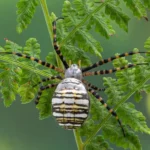 Banded Garden (Argiope trifasciata) - The banded garden spider is a common spider with two types: Argiope trifasciata deserticola and Argiope trifasciata kauaiensis. They prefer warm places and usually aren't around in cold winters because they don't like the chill.… Continue Reading >
Banded Garden (Argiope trifasciata) - The banded garden spider is a common spider with two types: Argiope trifasciata deserticola and Argiope trifasciata kauaiensis. They prefer warm places and usually aren't around in cold winters because they don't like the chill.… Continue Reading >
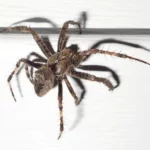 Fierce Orbweaver Spider (Araneus saevus) - The fierce orb weaver spider spins its web in interesting patterns. Part of the orb weaver spider family, it looks a lot like the Araneus nordmanni.… Continue Reading >
Fierce Orbweaver Spider (Araneus saevus) - The fierce orb weaver spider spins its web in interesting patterns. Part of the orb weaver spider family, it looks a lot like the Araneus nordmanni.… Continue Reading >
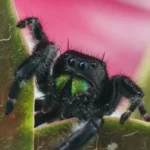 Bold Jumping (Phidippus audax) - Bold jumping spiders are super cool members of the Salticidae spider family. They get attention for their amazing jumps and colorful looks. Instead of using webs to catch food, they like to sneak up on bugs and jump on them!… Continue Reading >
Bold Jumping (Phidippus audax) - Bold jumping spiders are super cool members of the Salticidae spider family. They get attention for their amazing jumps and colorful looks. Instead of using webs to catch food, they like to sneak up on bugs and jump on them!… Continue Reading >
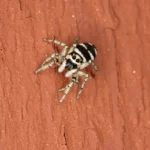 Zebra (Salticus scenicus) - Discover the fascinating world of the Zebra Spider, a creature from the northern hemisphere with stripes like a zebra. These lively spiders don't spin webs to catch their dinner.… Continue Reading >
Zebra (Salticus scenicus) - Discover the fascinating world of the Zebra Spider, a creature from the northern hemisphere with stripes like a zebra. These lively spiders don't spin webs to catch their dinner.… Continue Reading >
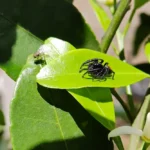 Red Back Jumping Spider (Phidippus johnsoni) - The Red Back Jumping Spider pops with vibrant red on its rounded belly. This colorful creature loves to leap around, making it a standout among American spiders.… Continue Reading >
Red Back Jumping Spider (Phidippus johnsoni) - The Red Back Jumping Spider pops with vibrant red on its rounded belly. This colorful creature loves to leap around, making it a standout among American spiders.… Continue Reading >
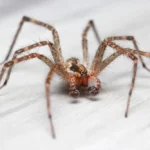 Hobo (Eratigena agrestis) - The Hobo spider is different from the Australian funnel-web, even though they both belong to the funnel-web spider group. With various scientific names like Philoica agrestis and Tegenaria rhaetica, these spiders can be found in Europe, Central Asia, and North America.… Continue Reading >
Hobo (Eratigena agrestis) - The Hobo spider is different from the Australian funnel-web, even though they both belong to the funnel-web spider group. With various scientific names like Philoica agrestis and Tegenaria rhaetica, these spiders can be found in Europe, Central Asia, and North America.… Continue Reading >
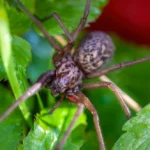 Giant House (Eratigena atrica) - Discover fascinating details about the Giant house spiders! Part of the Eratigena genus, these spiders may have a large appearance, but they're actually quite harmless.… Continue Reading >
Giant House (Eratigena atrica) - Discover fascinating details about the Giant house spiders! Part of the Eratigena genus, these spiders may have a large appearance, but they're actually quite harmless.… Continue Reading >
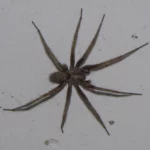 Barn Funnel Weaver (Tegenaria domestica) - Discover the Barn Funnel Weaving Spider, a spider known by various names worldwide, like the Domestic House Spider in Europe and the Common House Spider in the Pacific Northwest.… Continue Reading >
Barn Funnel Weaver (Tegenaria domestica) - Discover the Barn Funnel Weaving Spider, a spider known by various names worldwide, like the Domestic House Spider in Europe and the Common House Spider in the Pacific Northwest.… Continue Reading >
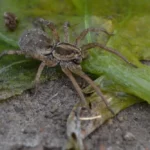 Carolina Wolf (Hogna carolinensis) - The Carolina Wolf Spider, native to America, is just one of the many wolf spider species globally. Known for being quick hunters, they prefer the chase over waiting on webs. You'll often spot these speedy spiders during midsummer nights, particularly around June.… Continue Reading >
Carolina Wolf (Hogna carolinensis) - The Carolina Wolf Spider, native to America, is just one of the many wolf spider species globally. Known for being quick hunters, they prefer the chase over waiting on webs. You'll often spot these speedy spiders during midsummer nights, particularly around June.… Continue Reading >
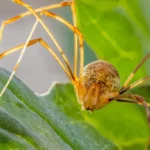 Long Bodied Cellar (Pholcus phalangioides) - The long-bodied cellar spiders are quite interesting! Often seen in America's dark and damp spots, they have really long legs. This is why some folks call them daddy-long-legs.… Continue Reading >
Long Bodied Cellar (Pholcus phalangioides) - The long-bodied cellar spiders are quite interesting! Often seen in America's dark and damp spots, they have really long legs. This is why some folks call them daddy-long-legs.… Continue Reading >
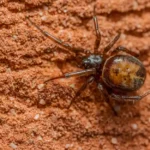 Rabbit Hutch Spider (Steatoda bipunctata) - Discover the intriguing world of the rabbit hutch spider, a comb-footed spider family member. Known for its unique habit of dwelling in places where rabbits live, this spider is more than just its name.… Continue Reading >
Rabbit Hutch Spider (Steatoda bipunctata) - Discover the intriguing world of the rabbit hutch spider, a comb-footed spider family member. Known for its unique habit of dwelling in places where rabbits live, this spider is more than just its name.… Continue Reading >
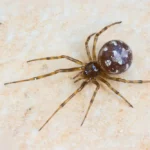 Triangulate Cobweb (Steatoda triangulosa) - Meet the triangulate cobweb spider from the Steatoda genus! Found in places like North America, New Zealand, and Europe, this little spider has a neat triangular pattern on its back.… Continue Reading >
Triangulate Cobweb (Steatoda triangulosa) - Meet the triangulate cobweb spider from the Steatoda genus! Found in places like North America, New Zealand, and Europe, this little spider has a neat triangular pattern on its back.… Continue Reading >
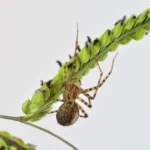 Common House (Parasteatoda tepidariorum) - Guess what? The American house spider is a popular spider many people meet! Even though its name says "American," it's also found in places like Pakistan and Myanmar.… Continue Reading >
Common House (Parasteatoda tepidariorum) - Guess what? The American house spider is a popular spider many people meet! Even though its name says "American," it's also found in places like Pakistan and Myanmar.… Continue Reading >
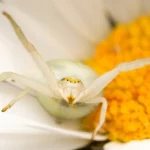 Goldenrod Crab (Misumena vatia) - Goldenrod Crab Spiders are super cool! They can change colors and hang out on flowers, waiting for their food. Instead of making big webs, they use silk for catching food or keeping their eggs safe.… Continue Reading >
Goldenrod Crab (Misumena vatia) - Goldenrod Crab Spiders are super cool! They can change colors and hang out on flowers, waiting for their food. Instead of making big webs, they use silk for catching food or keeping their eggs safe.… Continue Reading >